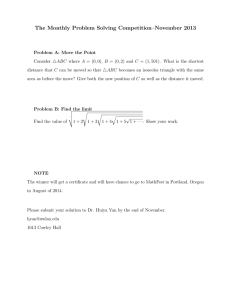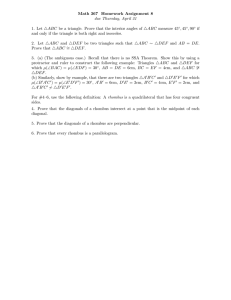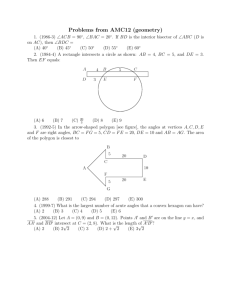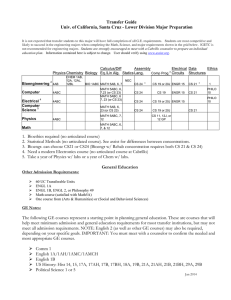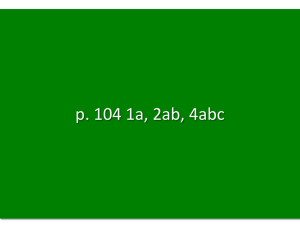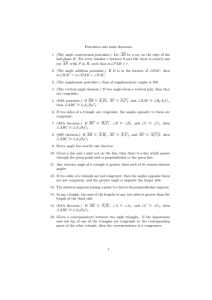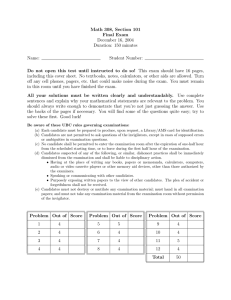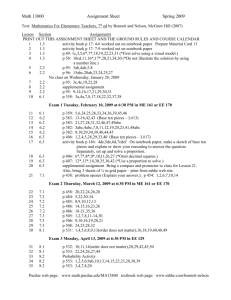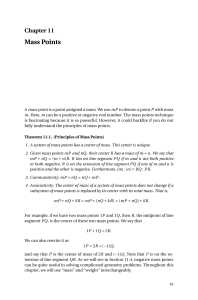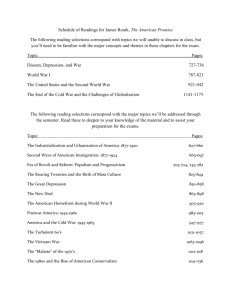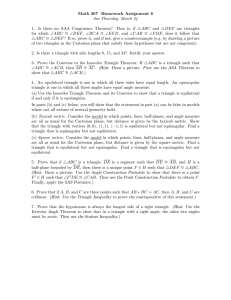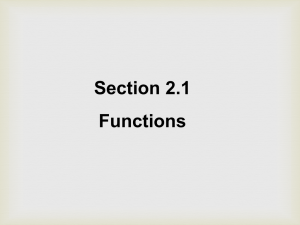3.1 Suppose that AB ∼
advertisement
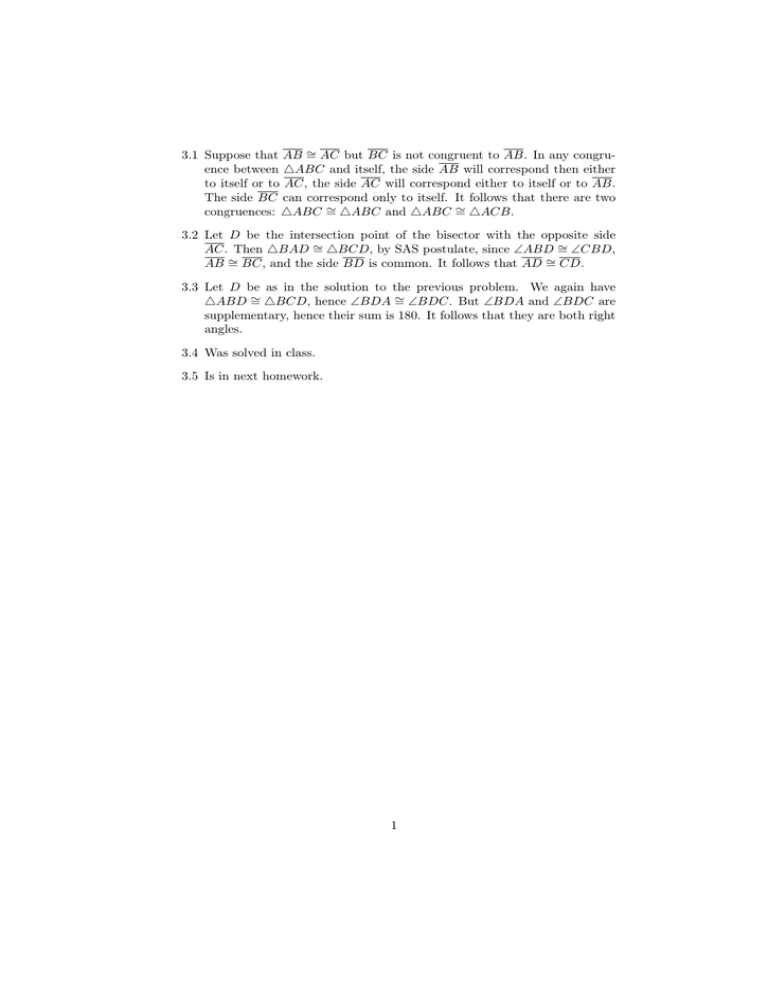
∼ AC but BC is not congruent to AB. In any congru3.1 Suppose that AB = ence between 4ABC and itself, the side AB will correspond then either to itself or to AC, the side AC will correspond either to itself or to AB. The side BC can correspond only to itself. It follows that there are two congruences: 4ABC ∼ = 4ABC and 4ABC ∼ = 4ACB. 3.2 Let D be the intersection point of the bisector with the opposite side AC. Then 4BAD ∼ = 4BCD, by SAS postulate, since ∠ABD ∼ = ∠CBD, ∼ AB = BC, and the side BD is common. It follows that AD ∼ = CD. 3.3 Let D be as in the solution to the previous problem. We again have 4ABD ∼ = 4BCD, hence ∠BDA ∼ = ∠BDC. But ∠BDA and ∠BDC are supplementary, hence their sum is 180. It follows that they are both right angles. 3.4 Was solved in class. 3.5 Is in next homework. 1
